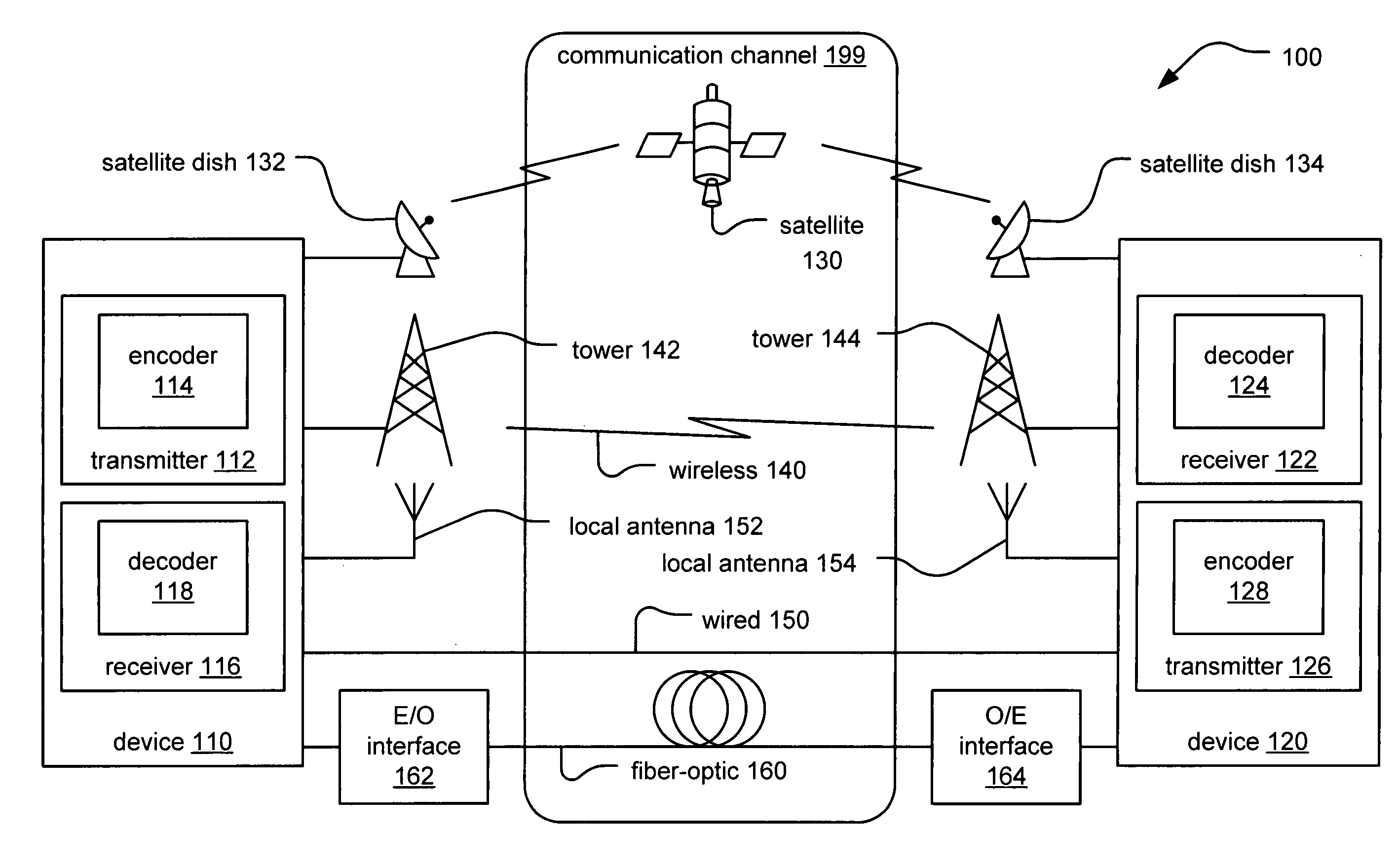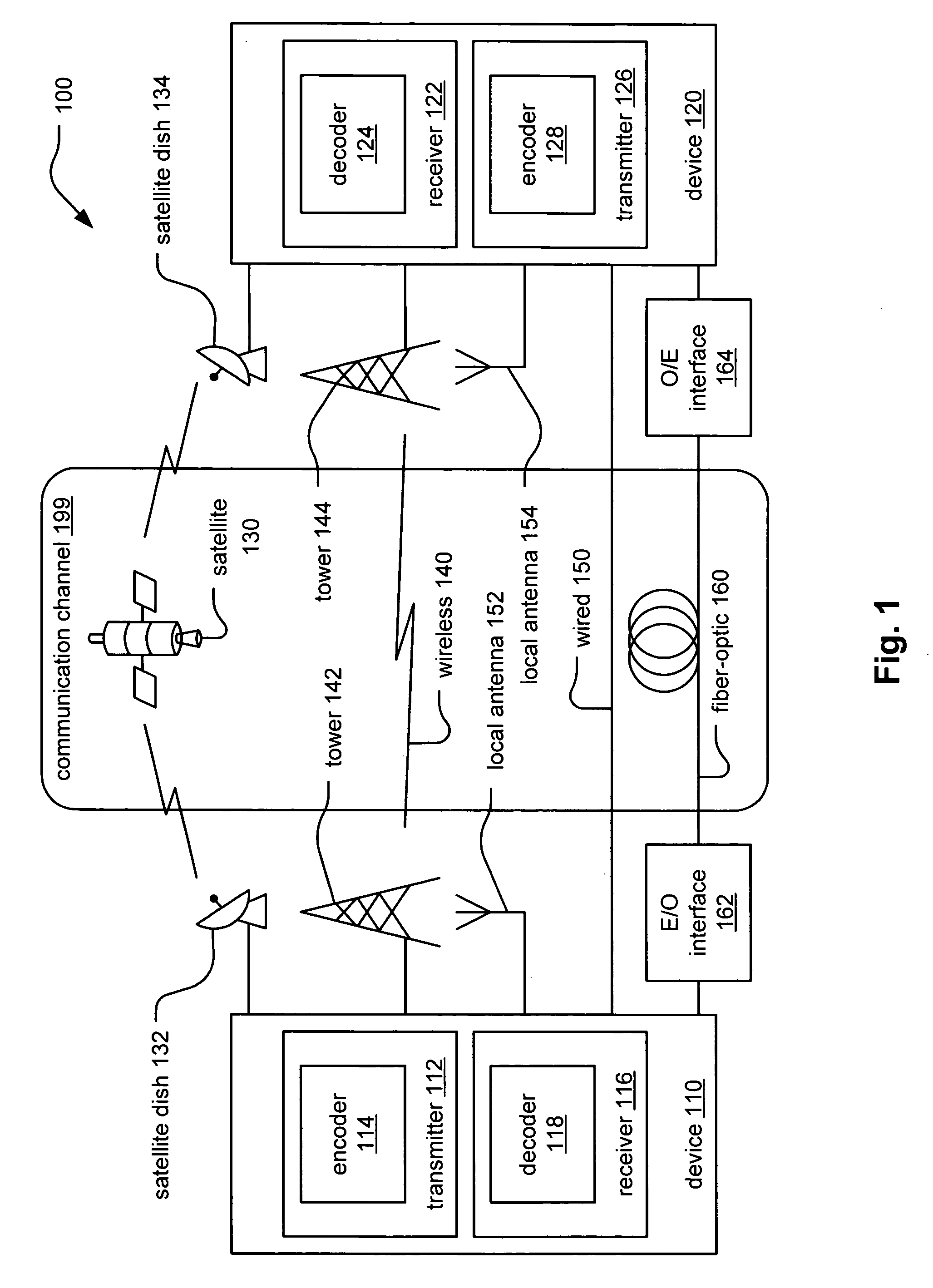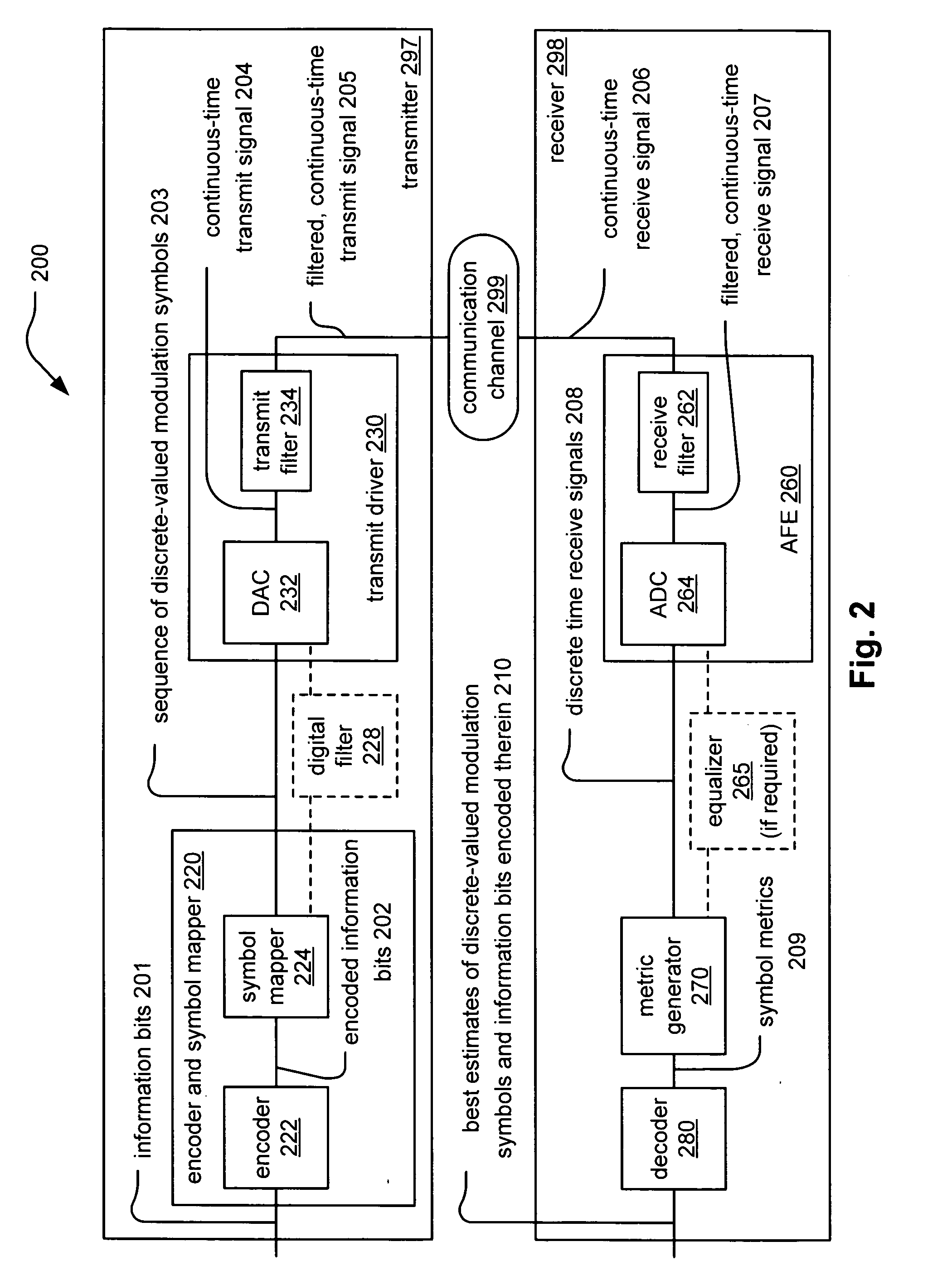Decoding LDPC (low density parity check) code with new operators based on min* operator
a low density parity check and code technology, applied in the field of communication systems, can solve the problems of large amount of computation, data management, and extensive processing and computations required to perform decoding therein, and achieve the effect of reducing the number of computations
- Summary
- Abstract
- Description
- Claims
- Application Information
AI Technical Summary
Benefits of technology
Problems solved by technology
Method used
Image
Examples
example 1
[0206] Within the following example, the inputs are as follows: [0207] {x1, x2, x3, x4}={0.5, 0.3, 1, 0.25}
[0208] Results from Min** Processing: [0209] min**{0.5, 0.3, 1, 0.25}=0.00419
[0210] Results from Min* Results: [0211] min*{0.5, 0.3, 1, 0.25}=−0.9139
[0212] Results from Software Provided by HNS for DVBS2: [0213] a=min* (0.5, 0.3) and b=sign(a)min*(|a|,1)=0.10443
[0214] The final results are then as follows:
final result=sign(b)min*(|b|,0.25)=−0.51858
[0215] Results from min† Processing: min †{0.5,0.3,1,0.25}={min †{min †(0.5,0.3),1,0.25}min †{0,1,0.25}min †{min †(0,1),0.25}min †{0,0.25}=0
[0216] Therefore, min† is, at least among these other 3 possible means by which to calculate an approximation to min**, the best approximation (e.g., 0 is closer to 0.00419 than any of the results from min* processing or the software provided by HNS for DVBS2).
[0217] Property 3:
[0218] Let x0, . . . , xm−1 be non-negative numbers. If min†{x0, . . . , xi}=0 for some i0, ...
PUM
 Login to View More
Login to View More Abstract
Description
Claims
Application Information
 Login to View More
Login to View More - R&D
- Intellectual Property
- Life Sciences
- Materials
- Tech Scout
- Unparalleled Data Quality
- Higher Quality Content
- 60% Fewer Hallucinations
Browse by: Latest US Patents, China's latest patents, Technical Efficacy Thesaurus, Application Domain, Technology Topic, Popular Technical Reports.
© 2025 PatSnap. All rights reserved.Legal|Privacy policy|Modern Slavery Act Transparency Statement|Sitemap|About US| Contact US: help@patsnap.com



